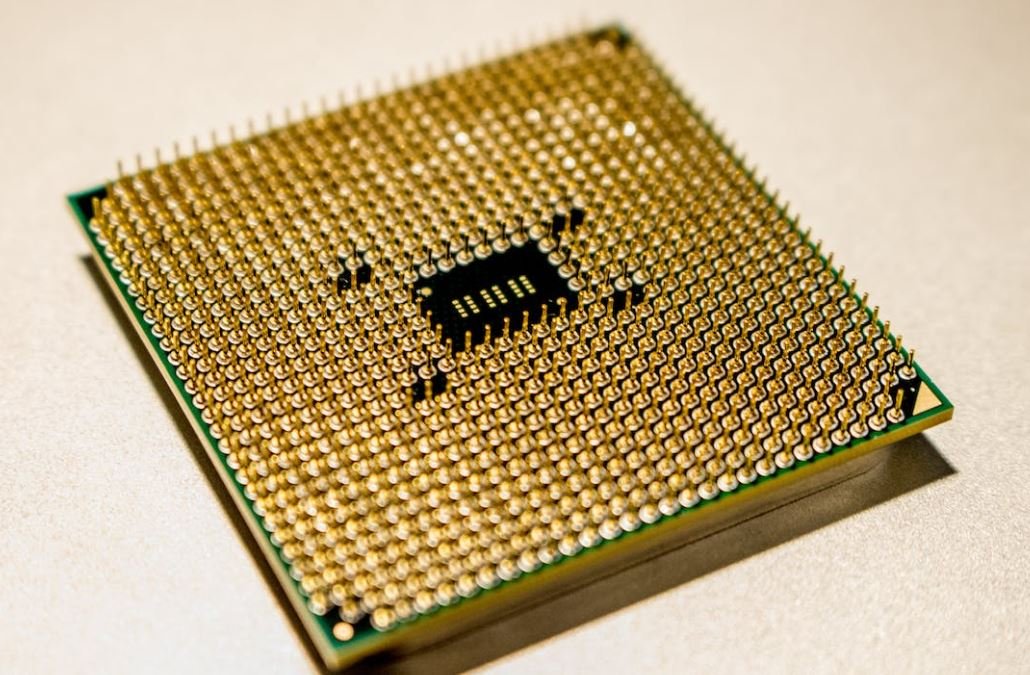Where Sperm Production Takes Place
Sperm production, also known as spermatogenesis, is a complex process that occurs within the male reproductive system. Understanding where this crucial process takes place is essential in comprehending male fertility and reproductive health.
Key Takeaways
- Sperm production takes place in the testes.
- The testes consist of tiny tubules called seminiferous tubules where sperm cells develop.
- Sertoli cells provide support and nutrients to developing sperm cells.
- Sperm cells undergo maturation in the epididymis after leaving the testes.
The Testes: The Site of Sperm Production
In males, the testes, or testicles, are the primary organs responsible for sperm production. They are located within the scrotum, a pouch of skin hanging below the penis. The testes are divided into tiny tubules called seminiferous tubules that form the bulk of their structure. This is where the entire process of sperm production takes place.
Within these tubules, germ cells or spermatogonia, dividing cells that give rise to sperm, continuously undergo a series of transformations to eventually produce mature sperm cells capable of fertilizing an egg.
Sertoli Cells: Vital Support for Developing Sperm Cells
Sertoli cells are specialized cells that provide crucial support and nourishment to developing sperm cells within the seminiferous tubules. These cells contribute to the activation and growth of spermatogonia and assist in the release of sperm cells into the tubule lumen.
Furthermore, Sertoli cells are responsible for creating the optimal environment within the testes for sperm production, regulating hormone levels, and aiding in the protection of developing sperm cells from harmful substances.
Maturation in the Epididymis
After sperm cells are produced within the seminiferous tubules, they move into a tightly coiled tube known as the epididymis. Here, the sperm cells undergo maturation, gaining the ability to swim and fertilize an egg.
The entire process of maturation in the epididymis can take several weeks. During this time, sperm cells acquire motility and undergo changes in structure and biochemical composition, enabling them to survive in the female reproductive system and have a higher chance of successfully fertilizing an egg.
Tables: Interesting Facts and Data Points
| Fact | Data Point |
|---|---|
| Normal sperm count | 15 million to more than 200 million sperm per milliliter |
| Sperm production rate | Approximately 100 million sperm per day |
| Length of the epididymis | Approximately 6 meters long |
| Stage of Spermatogenesis | Duration |
|---|---|
| Proliferation of spermatogonia | About 16 days |
| Meiotic divisions | Approximately 24 days |
| Spermiogenesis | Around 24 days |
| Hormone | Function in Spermatogenesis |
|---|---|
| Follicle-stimulating hormone (FSH) | Stimulates the growth and development of sperm cells in the testes |
| Luteinizing hormone (LH) | Regulates the production of testosterone, which is essential for spermatogenesis |
The Importance of Sperm Production
Sperm production is a crucial aspect of male reproductive health and fertility. Understanding where it takes place and how it occurs helps in diagnosing fertility issues and identifying potential treatment options such as fertility medications, hormone therapy, or assisted reproductive techniques.
By understanding the intricate process of sperm production, individuals and couples can make informed decisions regarding family planning and seek appropriate medical intervention when necessary.

Common Misconceptions
1. Sperm Production Takes Place in the Testes
Contrary to popular belief, sperm production does not take place solely in the testes. While it is true that the testes play a crucial role in sperm production, it is not the only organ involved in the process.
- The testes produce sperm cells.
- Sperm production also occurs in the epididymis.
- The prostate gland and seminal vesicles contribute to the development of sperm.
2. Ejaculation is the Same as Sperm Production
Many people tend to confuse ejaculation with sperm production. While ejaculation is the process of releasing semen from the body through the penis, it does not directly correlate to sperm production.
- Sperm production is an ongoing process that occurs continuously, unlike ejaculation which occurs intermittently.
- Ejaculation can occur without the presence of viable sperm.
- Sperm can be produced in the absence of ejaculation (e.g. during sexual abstinence).
3. Sperm are Only Produced in Younger Men
Another common misconception is that sperm production only occurs in younger men. However, this is not the case as sperm can continue to be produced throughout a man’s lifetime, although the quality and quantity of sperm may diminish with age.
- Sperm production can occur until old age in some men.
- Factors such as lifestyle choices and health can impact sperm production at any age.
- The rate of sperm production may vary between individuals, regardless of age.
4. Sperm Production is Not Affected by Environmental Factors
There is a misconception that sperm production is not affected by environmental factors. However, exposure to certain environmental factors can have a significant impact on sperm production and quality.
- Exposure to high temperatures can decrease sperm production.
- Chemical exposure from pesticides or industrial chemicals can affect sperm production.
- Chronic stress or poor lifestyle choices can also negatively impact sperm production.
5. Sperm Production is Equal in Both Testes
Many people assume that sperm production is equal in both testes. However, it is important to note that sperm production may not be equal between the right and left testicles, as each testis functions independently.
- One testis may produce a higher quantity of sperm compared to the other.
- In some cases, one testis may be damaged or non-functional, leading to a decrease in overall sperm production.
- The distribution of sperm production between the testes can vary from person to person.

The Journey Begins: Sperm Development
In order to understand where sperm production takes place, we must first explore the incredible journey that sperm undergoes from its initial development to reaching its destination. This table highlights the various stages of sperm development, showcasing the intricate process that ultimately forms the motile and vital cells required for reproduction.
| Stage of Sperm Development | Description |
|---|---|
| Spermatogenesis | The process of sperm production, occurring in the seminiferous tubules of the testes. |
| Spermiogenesis | During this phase, spermatozoa develop their neck, head, mid-piece, and tail. |
| Epididymis | The coiled tube where sperm cells gain motility and develop the ability to fertilize an egg. |
| Vas Deferens | A muscular tube that transports mature sperm cells from the epididymis to the urethra. |
The Dream Team: Male Reproductive Organs
Now that we have an understanding of how sperm is formed, let’s delve into the specific male reproductive organs that work in tandem to produce and deliver these remarkable cells. Each organ plays a crucial role in ensuring successful reproduction by providing a conducive environment for sperm development.
| Male Reproductive Organ | Function |
|---|---|
| Testes | Produce sperm cells through the process of spermatogenesis. |
| Epididymis | Facilitates sperm maturation and stores sperm until ejaculation. |
| Vas Deferens | Transports sperm from the epididymis to the ejaculatory ducts. |
| Ejaculatory Ducts | Carry sperm and seminal fluid to the urethra during ejaculation. |
| Urethra | Serves as a common pathway for urine and semen to exit the body. |
The Ideal Conditions: Testicular Environment
The process of sperm production requires an optimal environment within the testes, providing the necessary conditions for spermatogenesis to occur. This table highlights the essential elements and mechanisms present in the testicular environment that facilitate sperm development.
| Testicular Environment | Description |
|---|---|
| Seminiferous Tubules | The site of spermatogenesis, where sperm cells are produced. |
| Leydig Cells | Produce testosterone, a hormone crucial for spermatogenesis and male sexual characteristics. |
| Sertoli Cells | Provide nutritional and structural support to developing sperm cells. |
| Blood-Testis Barrier | Protects developing sperm cells from harmful substances and the immune system. |
Temperature Matters: Thermoregulation of Sperm
As the process of sperm production requires specific temperature conditions, the male reproductive system has evolved various mechanisms to maintain optimum temperatures for sperm development. This table explores the fascinating ways in which the male body regulates temperature to support the vitality of sperm cells.
| Thermoregulatory Mechanism | Approach |
|---|---|
| Hypothalamus | Regulates body temperature by controlling blood flow to the reproductive organs. |
| Scrotum | Adjusts the position of the testes for temperature regulation (closer to the body for warmth or further away for cooling). |
| Cremaster Muscle | Contracts or relaxes to adjust the position of the testes in response to temperature changes. |
| Pampiniform Plexus | A network of veins that cools the arterial blood supplying the testicles through heat exchange. |
The Role of Hormones: Orchestrating Sperm Production
Behind the scenes of sperm production lies an intricate hormonal dance that orchestrates the various stages and processes involved. This table highlights the key hormones involved in regulating spermatogenesis and ensuring proper sperm development and function.
| Hormone | Function |
|---|---|
| Follicle-Stimulating Hormone (FSH) | Stimulates the production of sperm cells in the seminiferous tubules. |
| Luteinizing Hormone (LH) | Stimulates Leydig cells to produce testosterone, crucial for spermatogenesis and male sexual characteristics. |
| Testosterone | Controls various aspects of male reproductive function, including sperm production and sex drive. |
| Follicle-Stimulating Hormone Releasing Hormone (FSHRH) | Released by the hypothalamus, it stimulates the secretion of FSH and LH from the pituitary gland. |
Embryological Origins: Development of Reproductive System
Embryologically, the male reproductive system arises from specific tissues and structures during fetal development. This table highlights the remarkable transformation that occurs, shaping the foundation for future sperm production and reproductive functionality.
| Embryological Structure | Developmental Outcome |
|---|---|
| Gonadal Ridge | Gives rise to the testes, the primary site of sperm production. |
| Seminiferous Tubules | Develop within the testes and act as the site for spermatogenesis. |
| Wolffian Ducts | Form various male reproductive structures, including the vas deferens. |
| Penis and Scrotum | Derived from genital tubercle and labioscrotal swellings, respectively. |
Lifestyle Influences: Factors Affecting Sperm Production
Sperm production can be influenced by various lifestyle factors, elucidating the impact of certain choices on fertility. This table highlights key factors that can either positively or negatively influence sperm production.
| Lifestyle Factor | Impact on Sperm Production |
|---|---|
| Diet | A healthy, balanced diet rich in antioxidants supports optimal sperm production, while a poor diet may negatively affect quality and quantity. |
| Smoking | Tobacco use has been linked to decreased sperm count, motility, and morphology. |
| Alcohol | Excessive alcohol consumption can disrupt hormone levels and impair sperm production. |
| Exercise | Moderate regular exercise has been associated with improved sperm parameters, while excessive or intense exercise may have a negative impact. |
Abnormalities: Conditions Affecting Sperm Production
Various medical conditions and abnormalities can affect sperm production and fertility. This table highlights some notable conditions that may impact the quantity, quality, or functionality of sperm cells.
| Medical Condition | Effect on Sperm Production |
|---|---|
| Varicocele | A swelling of veins within the scrotum that may lead to reduced sperm count or quality. |
| Klinefelter Syndrome | A genetic disorder that results in smaller testes and reduced sperm production. |
| Cryptorchidism | A condition where one or both testes fail to descend into the scrotum, potentially affecting sperm production. |
| Infection | Certain sexually transmitted infections can cause inflammation and damage to the reproductive system, impacting sperm production. |
The Miracle of Life: Sperm and Fertilization
Having explored the intricate process of sperm production, it is awe-inspiring to witness how this remarkable cell plays a vital role in fertilization and the initiation of new life. While this table doesn’t focus solely on sperm production, it showcases the key events leading to successful fertilization.
| Event | Description |
|---|---|
| Ovulation | The release of a mature egg from the ovary, making it available for fertilization. |
| Fallopian Tube | The site of fertilization, where sperm must reach and penetrate the egg. |
| Sperm-Egg Fusion | After successfully penetrating the egg, a single sperm fuses with the egg’s membrane, initiating fertilization. |
| Fertilized Egg | The resulting zygote begins dividing rapidly, leading to the formation of an embryo. |
Throughout this article, we have explored the fascinating world of sperm production, uncovering the stages, organs, hormones, and conditions that shape this incredible process. Sperm production is a delicate and intricate phenomenon, highlighting the complex nature of human reproduction. Understanding where sperm production takes place provides us with invaluable knowledge, contributing to our understanding of fertility, reproduction, and the miracle of life itself.
Where Sperm Production Takes Place – Frequently Asked Questions
Q: What is sperm production?
A: Sperm production, also known as spermatogenesis, is the process by which sperm cells are manufactured within the male reproductive system.
Q: Where does sperm production take place in the body?
A: Sperm production primarily occurs within the testes, which are the male reproductive organs located in the scrotum.
Q: How does sperm production occur?
A: Sperm production begins with specific cells in the testes called spermatogonia. Through multiple stages of cell division, these initial cells differentiate and transform into mature sperm cells.
Q: What are the main components involved in sperm production?
A: Sperm production involves several key components, including the testes, the seminiferous tubules within the testes, specialized cells called Sertoli cells, and hormones such as testosterone.
Q: Are there any factors that can affect sperm production?
A: Yes, various factors can influence sperm production, including hormonal imbalances, genetic disorders, certain medical treatments (e.g., chemotherapy), exposure to environmental toxins, smoking, excessive alcohol consumption, and overheating of the testicles.
Q: How long does sperm production take?
A: Sperm production typically takes around 70 to 90 days. However, it’s important to note that the entire process of spermatogenesis does not occur simultaneously in all cells, so new sperm cells are constantly being produced.
Q: Can sperm production be increased or improved?
A: While there are no guaranteed methods to increase or improve sperm production, maintaining a healthy lifestyle, managing stress levels, avoiding excessive heat exposure, and ensuring proper nutrition may support optimal sperm production.
Q: Does age affect sperm production?
A: Yes, age can impact sperm production. As men age, the quality and quantity of sperm cells produced may gradually decline. However, fertility can still be maintained well into older age.
Q: Can medical conditions affect sperm production?
A: Yes, certain medical conditions, such as varicocele, infections, hormonal disorders, and certain genetic conditions, can negatively affect sperm production. Consulting a healthcare professional for diagnosis and appropriate treatment is recommended.
Q: Can sperm production be permanently impaired?
A: In some cases, factors like testicular injury, surgical interventions (e.g., vasectomy), or medical treatments (e.g., radiation therapy) can cause permanent damage to the testes and impair sperm production. However, advancements in assisted reproductive technologies can offer options for fertility even in such cases.




